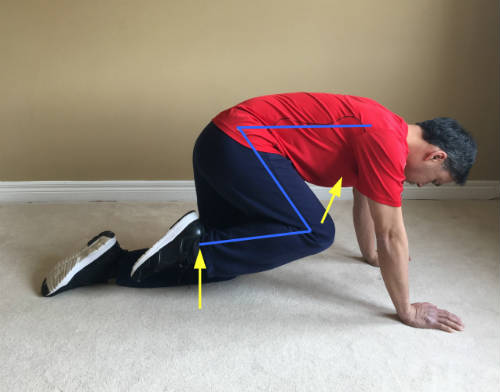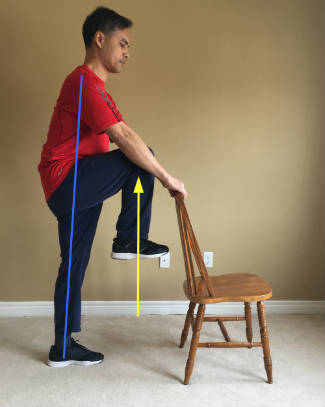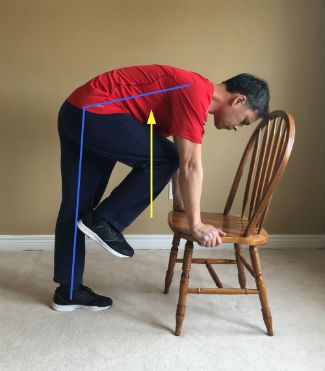What you can do now if you have tight lower back pain
Sherwin Nicholson | Updated Dec 1, 2020
Does your lower back stiffen up on you often?
Are you increasingly finding it more difficult getting out of bed, dress yourself, stand or sit during the day? Has your physical activity been severely compromised from the pandemic?
Is there a dull and strong painful sensation in behind and above your buttocks?
You may be in an endless cycle where you feel better by the end of the day only to become tight as before the VERY next morning.
This is not a coincidence but a chronic condition that you can learn to correct.
Not all issues with your lumbar spine and the muscles that support it can be resolved easily. However, there are some things that you can do now to help.
A better solution is by maintaining both your strength and flexibility in the hips and lumbar region to protect yourself.
Don’t waste any time during the pandemic. If you are at home more than you have expected, you need to keep fit to avoid lower back pain. Fortunately, all of the exercises that you can learn on this site can be done at home!
To release the tension and tightness in your lower back
Step 1
Engage your hip flexors by:
- kneeling on your hands and knees
- slowly elevate one shin upwards and parallel to the floor
- hold this position for 1 minute and then rest your leg down again
- repeat with the other leg
- practice 5 times per leg per day as needed

By raising your shin, you’ll help to immediately release any tightness in your back
This is a relatively simple exercise but is quite necessary and effective.
This simple lift helps to:
- release tightness found directly in your lower back (lumbar spine)
- take pressure off of your facet joints (spinal irritation)
- relieve anterior pelvic tilt
- strengthen your pelvis and hip flexors
- increase your hip flexibility which will release further tension and stiffness
You can vary this method at first by:
- Standing in front of a chair
- Raising one bent knee in front of you
- Holding for 1 minute and lowering your leg to rest position
- Repeating with the other leg
- Perform 5 times per leg per day as needed

Standing is an easier alternative if preferred
Hold on to a chair for support but also try to perform the exercise without using your hands. This way you will increase the challenge to your hips by balancing on one leg. This brings greater stability and fluidity for your spine over time.

You can also use this modified version if you would rather stay on your feet
Holding the position to relieve the tightness is important
It’s important to hold for at least 1 full minute because you’ll need to develop as much strength as possible. This is needed to counteract the weaker and stiffer muscle groups that are needlessly ‘locking up’ your pelvis right now.
It’s this very immobility that is worsening your pain and causing you your discomfort throughout the day.
When you hold, these stiffer muscles are ‘giving in’ to their act of resistance as the antagonistic muscle groups that you’re reconditioning are countering their effect.
The upside to this is that you’ll have a newfound flexibility, greater range of motion and more relief.
The downside in that you are very likely to experience some temporary soreness from the resistant and weaker muscles that you are also trying to recondition. Whenever you need to rehabilitate a very weak, tight and fatigued muscle, it is going to feel sore each time that you try to encourage more activity from it.
This means that as one part of your body feels better, another part will feel sore. In my opinion, this is usually what discourages people from continuing with physical treatments. It’s normal and expected.
Follow these best recommendations:
- Only perform these movements gradually and slowly each day
- Don’t expect too much to be accomplished in the first week.
- Focus on the technique while you move in very slight increments.
- Break frequently to help minimize your discomfort during your retraining.
Practice this simple knee raise every day
Once you get accustomed to this simple 1 minute knee raise, you’ll find it much easier to release your back tension. It should be easier for you to sleep, stand, sit and walk.
Don’t expect for it to be able to resolve all of your stiffness as there are many other examples of exercises that you can follow for a number of issues. Your degree of stiffness can also be likely related to your age.
You can progress from this 1 minute exercise to many other convenient ones also available here on this site.
Remember that there is a lot that you can do on your own to help self treat your discomfort on a long term basis. This site is dedicated to help you to achieve this goal. Please take the time to explore the many topics available here to help you.
For additional help, please check out these topics:
When it hurts to get up every day
